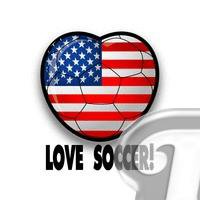An Overview of American Soccer History

The College Era, and Rules Consolidation, 1862-1875
The Working-Class and Immigrant Eras, 1875-1894
The First Dynasties, 1913-1921
The 1960's: The Birth of the American Soccer Renaissance
Outdoor soccer reaches a low: 1985
The Rebirth of Outdoor Soccer, 1988-1994
1994: The World Cup comes to America
From World Cup to Major League Soccer (1995-1996)

The 21st Century: Heading Toward Dominance
The period from 2001-2004 saw a number of positive developments for the American game. The Women’s United Soccer Association was launched in 2001, and immediately established itself as the premier women’s league in the world. Their rosters included virtually all of the National Team players who were not still in college, as well as a goodly portion of the top international stars. The league did better than expected at the gate, and although the early games showed the typical struggles of a new league, quality of play rapidly increased. The WUSA continued to provide first class women’s soccer for three seasons, but took on enormous financial losses. This combined with disappointing TV ratings and lack of sponsor revenue led the league to suspend operations shortly after the 2003 season, although the league arranged a series of exhibitions for 2004, with hopes to re-launch in 2005.
The National youth teams had disappointing runs in 2001, but both did better in 2003, getting well out of the qualifying rounds at the 2003 youth championships. A somewhat bitter event was the Olympic team’s failure to qualify for the 2004 Olympics. But the big story was the Men’s National team and their performance at the 2002 World Cup, in which they came 1 goal short of making the final four, in a close loss to #3 ranked Germany, after defeating Mexico in the Round of 16. The Women unexpectedly got to host the 2003 World Cup after the games were moved out of China due to the SARS crisis. The tournament was a big success again, although on a more modest scale than in 1999, but like with the Olympics, the US felt the effects of the rapidly improving women’s game, losing in the semifinals.
Major League Soccer continued to make slow but steady improvements, with a marked improvement in attendance in 2002, and steadily improving quality of play. They focused less on attracting international stars, and more on developing younger players. Although Project-40 withdrew from the A-League, it continued to find success as a means for tagging top prospects, several of which went onto major success in the league and with the national team. A substantial portion of the US World Cup squad consisted of MLS players, and their performance made the world take MLS seriously as a quality league. After the World Cup, MLS increasingly became a launching point for American players who would move to prestigious European clubs, and quite often, make a major impact there.
Tim Howard became the starting goalkeeper for Manchester United, and the 2004 season would see the debut of 14-year old Freddy Adu, the youngest player ever to debut in a US pro soccer league. Several developments pointed to long-term strength for MLS, as more investor took control of league teams with expansion franchises tentatively awarded to Cleveland and San Diego for 2005. The league also signed a five year TV contract in 2001. Finally, a first class soccer-specific stadium opened in Los Angeles in 2003, with other stadiums confirmed or in proposal stages at Dallas, Chicago and New York.
The Indoor game saw some consolidation as the NPSL morphed into the new single-entity Major Indoor Soccer League II in 2002, and absorbed the World Indoor Soccer League the following summer. A new phenomenon was launched in 2003, with a highly successful tour by Manchester United and several other top European clubs. Although not sponsored by MLS, the tour saw sellout crowds at some of the largest US Stadiums, leading MLS to expand their overseas training tours for the 2004 season. The USL saw continued consolidation with increasing strength in their 2nd Division A-League, and great expansion in their Super Y-League, although some of their west coast teams defected to help form the new Men's Premier Soccer League. The USL also renamed their leagues, with the A-League becoming the USL Division 1 and the Pro Soccer League (Div. 3) becoming "USL Division 2". The W-League consolidated somewhat in 2004, but the Women's Premier Soccer League continued to grow. The US Men's Olympic team failed to qualify for the 2004 Olympics buyt the women's team won the Gold medal, a fitting sendoff for several female players who retired later that year.
MLS enjoyed a good year in 2004, with increasing attendance, two more stadiums under construction and new teams on the way in Los Angeles (Chivas USA) and Utah (Real Salt Lake). Increasingly, MLS clubs established reserve squads who played in USL’s amateur division, and during the 2004 season, MLS announced that all clubs would establish reserve teams playing their own parallel season for 2005. A steady stream of US players were landing starting spots at prominent European clubs, including Tim oward who won a cup title with Manchester United. Fortunately, the influx of young talent was enough to keep these losses from being too keenly noticed. Overall the talent pool continued to improve with leaps and bounds.
Overall, as 2005 commenced, there were a number of positive directions being taken at all levels of US soccer, particularly steps to ensure the long-term viability of the game